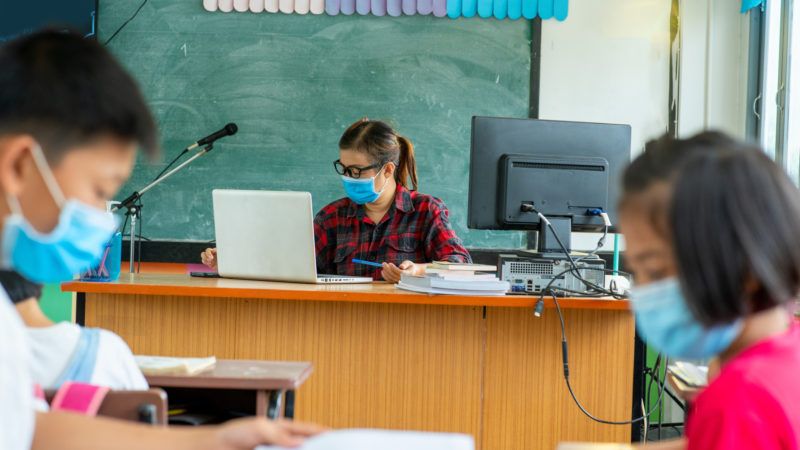K-12 Schools That Reopened Have Avoided COVID-19 Surges So Far
In communities where young kids returned to classes, it's mostly good news.

While most large school districts throughout the U.S. are continuing with distance learning, the smaller number of schools that have reopened are reporting good news: So far, K-12 school buildings have not played host to sizable COVID-19 outbreaks.
"Everyone had a fear there would be explosive outbreaks of transmission in the schools," Michael Osterholm, director of the Center for Infectious Disease Research and Policy at the University of Minnesota, told The Washington Post. "In colleges, there have been. We have to say that, to date, we have not seen those in the younger kids, and that is a really important observation."
Researchers at Brown University found extremely low levels of virus transmission over a two-week period in schools that reopened. In many places, the rate of infection in schools was lower than in the rest of the community.
These results came as something of a surprise to some teachers union leaders, according to the Post. "I am not seeing at this particular point the rate I had expected," said Zeph Capo, president of the Texas branch of the American Federation of Teachers.
Keep in mind that teachers unions have fought tooth and nail to keep schools closed. Last week, New York City's union successfully pressured Mayor Bill de Blasio to delay reopening schools yet again, even though NYC is one of the areas of the country best equipped, at this point, to manage the pandemic. In Washington, D.C., the teachers union is skeptical about reopening in November.
It's still very early, of course, and opening schools could eventually correlate with significant virus spread. But right now, the idea that it's impossible to reopen schools safely until some undetermined, far off point in the future—perhaps when a vaccine is available—is not holding up.
College campuses, on the other hand, have seen some fairly significant outbreaks. This makes sense: College students live and socialize with each other to a greater degree than young kids do, and many administrators were either naive or indifferent to the fact that compliance with extreme social distancing demands were bound to be ignored.
But even at the college level, not everything is bleak. Some universities have found a workable solution: testing, testing, testing. The University of Illinois, for instance, is testing its entire undergraduate population twice a week; that's 10,000 tests every day. Developing the capacity to pull this off isn't easy, but it appears to work very well when implemented. University health officials can quickly identify asymptomatic cases and quarantine the sick.
Contrary to what the most ardent supporters of endless lockdowns believe, it is possible to safely reopen schools without making students miserable or placing teachers in danger. It just takes planning, hard work, and testing, testing, testing.


Show Comments (40)